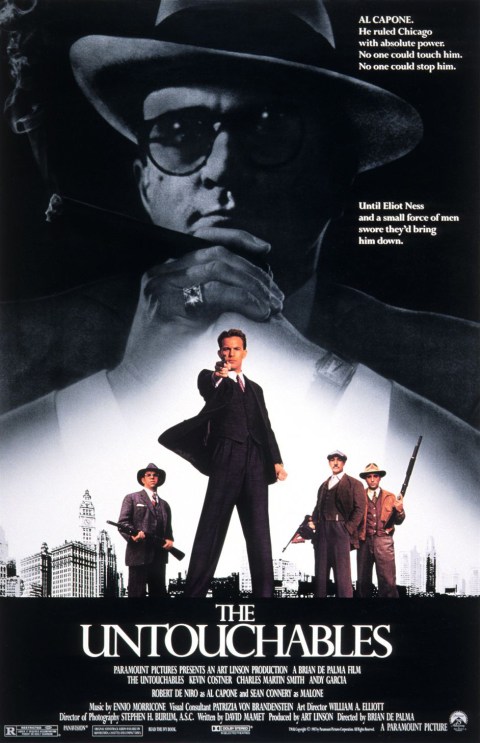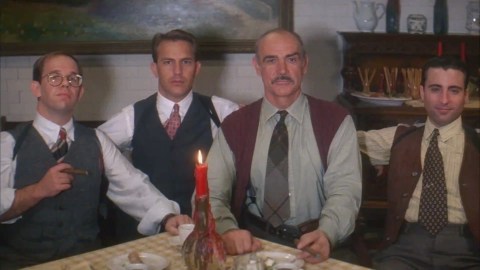17. 4. – 19. 4. 2026
The Untouchables

 Original title: The Untouchables
Original title: The UntouchablesDirector: Brian De Palma
Production: 1987, USA
Length: 115 min.
Screened:
70mm film seminar 2009: 70mm 2.2:1, Colours intact, MG Dolby A, Spoken language: English, Subtitles: CzechKRRR! 2016: 70mm 2.2:1, Colours intact, MG, Spoken language: English, Subtitles: Czech
Annotation for 70mm film seminar 2009
Gangster guru Al Capone was a star in Chicago in the 1920s, everyone respected him, everyone feared him, and everyone quietly tolerated his tactics, when the corpses of unsuitable people occasionally appeared around the city. The Prohibition era was an opportunity for the illegal alcohol trade, which brought extraordinary profits to the gangs. However, federal agent Eliot Ness decided to assert himself against a powerful enemy, and together with three other men he formed a group called the Incorruptibles, and together they decided to put Capone behind bars. At the same time, each of them knew that in such a joke, life was always at stake.
The Incorruptibles benefited to a large extent from the rediscovered interest of the new (new) Hollywood in the gangster genre. The film openly follows the cinematic self-reflexive tendencies of American cinema, reconstructing the Prohibition era in a retro-approach that does not set itself the ambition to credibly reflect the appearance of the time, but to quote certain aspects of the style of films that tell about the time or come from that time. More than the rhythmically loose and visually expressive form of The Godfather (1972) or the aggressive expressive means of Scarface (1984), The Expendables refers more to the gangster films of the classic Hollywood era, although it occasionally reflects De Palma's penchant for bold camera angles and playing with focal lengths. Despite the sense of prestige of the creative team behind the 1987 film, this is more of an illusion in the context of the time it was made. The only star was Robert De Niro as Al Capone and, for a certain group of viewers, perhaps composer Ennio Morricone. Director Brian De Palma had a reputation for experimenting with genres and storytelling that somewhat overshadowed the good name of the creator of Scarface. Even after The Name of Lipstick, Connery was still building the foundations of the post-Bond artistic respect he gained in the 1990s, and the Oscar for The Expendables certainly helped him. Kevin Costner and Andy Garcia were then acting novices. The Incorruptible helped all involved to launch, restart or consolidate their filmmaking careers.
In Brian De Palma's work, The Incorruptible, like the following Casualties of War (1989), belongs to the less eccentric line of his work, which he took immense pleasure in interspersing with extravagant images, peculiarly varying the narrative patterns of famous auteur films. Despite the much more traditional concept of The Incorruptible, he did not forgo the filmmaker's joke in them either, and to this day it is one of the most impressive sequences in his films. The Incorruptible wait for the mafia with loaded weapons on the train station steps, a mother with a child in a stroller rides down and the film time slows down... This peculiar De Palma tribute to the Battleship Potemkin will stick in your memory, just like the recurring line about how "nice to be married" is.